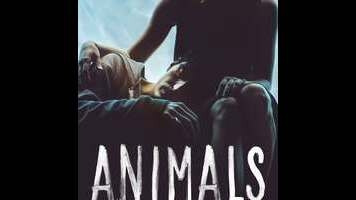The well-acted Animals is an addiction movie like plenty of others

Technically speaking, Animals has more than two characters, but it follows heroin-addicted couple Jude (David Dastmalchian) and Bobbie (Kim Shaw) so closely that the people around them can fit in the frame only briefly. Cops, drug dealers, doctors, and victims of their petty crimes rarely last more than a single scene, while their friends and family (if applicable) remain entirely offscreen. Even the timeline recedes into a haze, both specifically and broadly. Early in the movie, director Collin Schiffli cuts from Jude and Bobbie nuzzling in what looks like a hotel or a high-rise apartment to the couple waking up in their car, their home for most of the movie. The cut makes the earlier shot of them in bed feel like a fantasy—which it sort of is, whether it really happened or not. As their story continues, Animals seems vaguely like a recent period piece, because Jude and Bobbie shoplift used CDs to resell for drug money, and place scam prostitution ads via a pay phone and a voicemail account. But the film never lands in a historical moment more defined than post-cell phone, pre-smartphone.
There’s plenty of time to consider whether Jude and Bobbie are skulking around Chicago in 2001 or 2006 because Animals wanders with its characters from score to score. (One flashback to their earliest days together confirms that not much has changed.) The pair dresses up their desperation with mutual affection and routines, like the methodical way they arrange their gear and shoot up in separate restrooms of various diners. To a degree, the movie is smart about these delusions. But this is also the kind of miserably gritty material that the filmmakers will inevitably call a love story—almost entirely because the characters pretend to be married and have only each other. Any appearance of love has little to do with their actual relationship, because not much of the pair’s time together appears to have been spent in any kind of sobriety.
The actors do their best to bring humanity to the junkie clichés, assisted by their character-actor mix of familiarity and anonymity. Dastmalchian (who also wrote the screenplay, apparently based on his own experiences) is most recognizable as one of the Joker’s mentally imbalanced henchmen from a few scenes of The Dark Knight, while Shaw’s face seems to change from scene to scene. Sometimes she looks a bit like Meg Ryan, sometimes more like Elizabeth Banks; it depends at least partially on the role Bobbie has assigned herself. The dynamics of the couple’s various scams, often fronted by Bobbie’s resourceful and convincing lies, prove more compelling than the recognizable cycle of annihilating highs and withdrawal-driven lows.
Schiffli directs all of the typical addiction business with a steady if sometimes overbearing hand. He leans on the heavy-handed title motif in scenes that cut to inhabitants of the Lincoln Park Zoo in Chicago, where Jude and Bobbie spend some of their downtime. But that may also be a fault of Dastmalchian’s screenplay, which also hinges on a relationship-long promise to go swimming—a self-consciously writerly touch. At one point, Animals complicates Jude and Bobbie’s aimless relationship with what looks, from a distance, like a collision between two very different types of issue movies. But it never pushes far enough into that territory to distinguish its beautiful losers from the many addiction-movie characters that precede them.